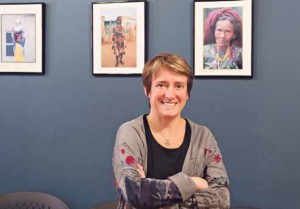Dr. Nili Kaplan-Myrth,MD,CCFP,PHD
“I had no idea,” patients are saying when they hear that my medical colleagues and I are talking about the risk of family medicine clinic closures in Ottawa on the radio or read our articles in the papers.
I’m a family doctor down the road from you. I take care of 1,400 patients, many of whom live in Old Ottawa East. If I’m not your doctor, then one of the 25 family doctors in our practice group in central Ottawa probably takes care of you, your kids, your parents, your colleagues, or your neighbours. You also rely on medical specialists in Ottawa whose clinics may also close.
Here’s a snapshot of family medicine before the COVID-19 pandemic began: Work begins at 9am with my pediatric patients, then I’d see the rest of my patients (infections, injuries, chronic illnesses, addictions, women’s health issues, geriatrics, and mental health concerns). I’d end my clinic day; I’d then do home visits to my palliative patients.

Dr. Kaplan-Myrth is pictured here in her office waiting room prior to the COVID-19 pandemic. Photo by TIA Photography
All of that is integral to family medicine. I’ve sat in people’s living rooms with them as they grieved the death of a family member and stood at their side to welcome newborns into their lives. I work 50-60 hours/week. My commitment to my patients is to maintain a long-term relationship with them, give them a “safe” space, advocate for them.
Since the pandemic began, I’ve been working 8am to 8pm, phoning patients at home, trying to address all their primary care needs, and also triaging and managing symptoms of COVID-19, supporting patients through their isolation. I ration limited PPE to assess infants, give immunizations, and other essential treatments. Patients wait in cars while we screen them. When they leave, I disinfect every surface.
My colleagues and I who work in central Ottawa are stuck in a fee-forservice (FFS) model of care. Most of us don’t want to be FFS. It’s a model that prioritizes quantity over quality; we have to see enough patients in a day to pay our bills. If patients don’t show up, we don’t get paid. If we get sick or miss work for education, we’re not paid. When patients ask for prescription renewals by fax, to fill in forms, we’re not paid.
We bill OHIP codes for each visit. When COVID-19 began, new OHIP codes were introduced for caring for patients by phone and video. But even with “virtual care,” our patient volume dropped substantially. Why? 1) PPE shortage; 2) bringing patients into the office is very slow now; 3) many revenue-generating procedures had to be canceled; and 4) telephone/video is frustrating when people don’t answer!
Why are we stuck in FFS? Some colleagues already work in a better model, known as Family Health Organizations (FHOs). They receive “capitation” payments each month: they are paid by the number of patients registered with them, not by the number of people they see in a day. FHOs provide income stability. In 2015, the Ontario Ministry of Health decided that doctors could only form new FHOs in suburban/rural areas. As a new graduate at the time, there was no option for me to form an FHO, and all the spots in FHOs in Ottawa were taken.
Why doesn’t the Ministry consider Ottawa’s urban populations “in need” of services? Who knows? Thousands of people in our cities don’t have a doctor. In Ottawa, FFS family doctors care for approximately 335,000 patients. Those patients will be left without care if we close our clinics to move out to suburbs/rural areas.
Patients keep asking how I’m doing. I don’t want to freak them out, so I say, “Don’t worry.” But I’m worried.
![]() What can you do? The challenge is getting the Ontario Ministry of Health to consider cities as important as suburbs. Write to the Ontario Minister of Health, Christine Elliott, to our MPP, Joel Harden, to Capital Ward Councillor, Shawn Menard. Make it clear that it would be serious if you lost your family doctor. Sign this petition to allow family doctors in the city to form FHOs, as almost 5,000 have done so far: http://chng.it/gH45G7RdM4.
What can you do? The challenge is getting the Ontario Ministry of Health to consider cities as important as suburbs. Write to the Ontario Minister of Health, Christine Elliott, to our MPP, Joel Harden, to Capital Ward Councillor, Shawn Menard. Make it clear that it would be serious if you lost your family doctor. Sign this petition to allow family doctors in the city to form FHOs, as almost 5,000 have done so far: http://chng.it/gH45G7RdM4.






